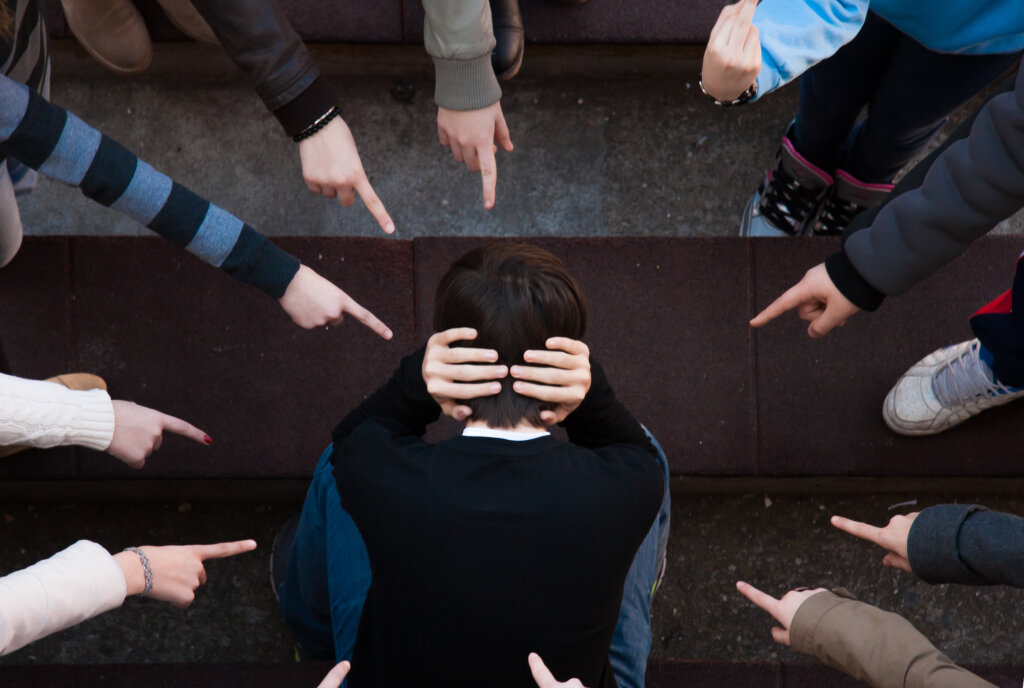Moral Disengagement


Written and verified by the psychologist Isabel Ortega
Why do some people steal and do so much damage to others? How can some individuals lead double lives and cheat on their partners and children? Why do some people continually lie? We might often find ourselves asking these kinds of moral questions.
In fact, it’s common for us to seek answers to these types of questions about immoral behaviors in society. Albert Bandura, the Canadian psychologist, answered them via his theory of moral disengagement.
Moral disengagement
Bandura saw moral disengagement as “a set of cognitive and behavioral self-regulation mechanisms that make it possible to rationalize and legitimize disruptive and criminal behaviors, deactivating those habitual inhibitory barriers linked to moral judgment”.
Moral disengagement is a psychological construct that takes into account the cognitive processes of people who commit criminal behavior.
As humans, as our prefrontal cortexes mature, we tend to gain control over our behavior. Moreover, we acquire scales of values and boundaries with which we distinguish between moral and immoral behavior. Bandura claimed that we build our behaviors from birth. These behaviors are either reinforced and/or punished.
However, can an individual be kind and, at the same time, commit inhumane acts? The answer is yes. In fact, it occurs in the process Bandura identified as moral disengagement.

The explanation of moral disengagement
By moral disengagement, we mean the mental mechanisms used by an individual so that they perceive certain disruptive or immoral behaviors by themselves or others as not so bad or harmful.
The purpose of this disengagement is to justify immoral behavior. Moreover, it ensures that the perpetrator doesn’t feel that they’re harming their self-image and self-concept.
But, how does moral disengagement occur? In fact, it can be understood as a deactivation of self-control. This is due to the action of different mechanisms that influence the individual’s behavior or conduct. For example:
- Moral justification. An individual justifies their actions for their own purposes.
- Euphemistic language. They perceive the harmful action as less serious by using more neutral language to describe it.
- Advantageous comparison. They compare their own behaviors with others they consider to be far worse.
- Distortion of the consequences. They consider that their behaviors or actions ‘are no big deal’.
- Attribution of guilt. They believe that the victim or victims deserved such treatment. Therefore, they see their own behavior as normal.
- Dehumanization. They reduce their empathy with the affected people so as not to feel guilty about any consequences.
- Displacement of responsibility. They attribute responsibility to other external elements. This frees them from any responsibility.
- Diffusion of responsibility. They distribute responsibility among several people or situations. In effect, they view them as the culprits of their immoral behavior.
The mechanisms influencing immoral behavior
These mechanisms have the goal of redefining behavior, dissipating responsibility, reinterpreting consequences, or blaming the victim.
However, does moral disengagement only occur in individuals who commit heinous acts like murder? The answer is no. In fact, this psychological mechanism can be observed in different contexts. For instance, bullying, criminal activities, substance use, terrorism, or doping, among others.
When there’s infidelity in a relationship or inhumane behavior in hierarchical companies, we see Bandura’s theory of moral disengagement in action in a simple way.
Indeed, this theory can be observed in any individual who assumes as normotypical their own behaviors that they previously considered to be harmful, cruel, or even criminal. Moral disengagement also reduces their feelings of empathy.
Bandura clarified that moral disengagement doesn’t necessarily refer to an individual with normalized behavior committing atrocious acts. Rather, it refers to a progressive process in which certain behaviors are practiced, even if they generate some feelings of discomfort or guilt.
Subsequently, with the repeated action of similar behaviors, the discomfort or the degree of guilt that the individual may feel decreases. At the same time, the severity of the behaviors they carry out increases. Eventually, these behaviors become routine and the individual perceives them as normal.
All cited sources were thoroughly reviewed by our team to ensure their quality, reliability, currency, and validity. The bibliography of this article was considered reliable and of academic or scientific accuracy.
- Bandura, A., Barbaranelli, C., Caprara, G. V. & Pastorelli, C. (1996). Mechanisms of Moral Disengagement in the Exercise of Moral Agency. Journal of Personality and Social Psychology, 71(2), 364-374.
- Boardleya, I.A., Smith, A.L., Mills, J., Grixa, j., Wynnea, C. & Wilkins, L.(2018). Development of moral disengagement and self-regulatory efficacy assessments relevant to doping in sport and exercise. Psychology of Sport & Exercise, 36, 57-70.
- Giulio, D., Petruccelli, I. & Pace, U. (2018). Drug use as a risk factor of moral disengagement: A study on drug traffickers and offenders against other persons. Psychiatry, Psychology and Law. Advance online publication.
- Gutzwiller-Helfenfinger, E. (2015). Moral disengagement and aggression: Comments on the special issue. Merrill-Palmer Quarterly, 61(1), 192-211.
- Kokkinos, C. M. & Kipritsi, E. (2017). Bullying, moral disengagement and empathy: exploring the links among early adolescents. Educational Psychology, 1-18.
- Muratori, P., Paciello, M., Buonanno, C., Milone, A., Ruglioni, L., Lochman, J. E. & Masi, G. (2017). Moral disengagement and callous–unemotional traits: A longitudinal study of Italian adolescents with a disruptive behavior disorder. Criminal Behaviour and Mental Health, 27(5), 514-524.
- Petruccelli, I., Simonelli, C., Barbaranelli, C., Grilli, S., Tripodi, M. F. & D’Urso, G. (2017). Moral disengagement strategies in sex offenders. Psychiatry, Psychology and Law, 24(3), 470-480.
- Villegas de Posada, C., Flórez, J. & Espinel, N. (2018). Moral disengagement mechanisms and armed violence. A comparative study of paramilitaries and guerrillas in Colombia. Revista Colombiana de Psicología, 27, 55-69.
This text is provided for informational purposes only and does not replace consultation with a professional. If in doubt, consult your specialist.








